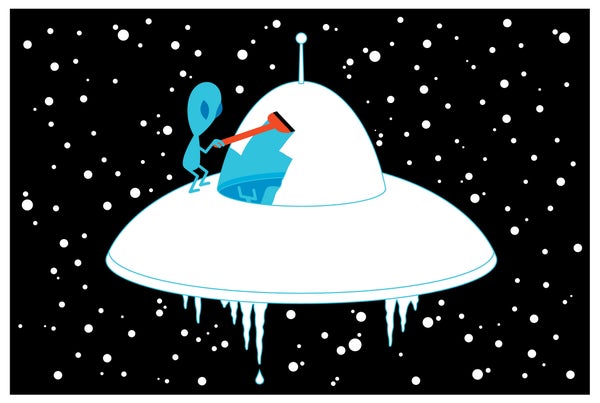How to Make Alien Ice
Tricks to produce strange “ordered” ice could reveal new ice forms
Most solids owe their solidity to the regular, latticelike arrangements of their molecules and atoms. But in the water ice that falls as snow or crusts over windows on frosty mornings, only the oxygen atoms are orderly; H2O’s two Hs can orient any which way.
Ordered ices, whose hydrogen atoms are neatly organized instead, most likely exist elsewhere in the universe, such as within the high-pressure hearts of gas giants and icy moons. Studying these exotic ices in the laboratory is tricky because they form so slowly. But in experiments with an ice called ice XIV, scientists publishing in PNAS Nexus have discovered tricks for creating ordered ices up to 100 times faster than before—within days rather than years.
“The results are really clear and very, very helpful,” says condensed matter physicist Leonardo del Rosso of the National Research Council (CNR-IFAC) in Florence, Italy, who also studies ordered ice. “This strategy is applied to ice XIV, but you can extend these to other forms of ice—I hope!”
On supporting science journalism
If you’re enjoying this article, consider supporting our award-winning journalism by subscribing. By purchasing a subscription you are helping to ensure the future of impactful stories about the discoveries and ideas shaping our world today.
Ice XIV forms at low temperatures and extreme pressures (about 10 times the pressure at the bottom of the Pacific Ocean’s Mariana Trench), and its molecules form DNA-like double helices. Stranger still, a glacier made of ice XIV, or any ordered ice, wouldn’t flow; instead it would shatter. Study lead author Christina Tonauer, a physical chemist who performed the experiments as a graduate student at the University of Innsbruck in Austria, says she can feel this textural difference when she grinds samples by hand.
Ordered ice forms slowly, even under the right conditions, because…
Read the full article here







